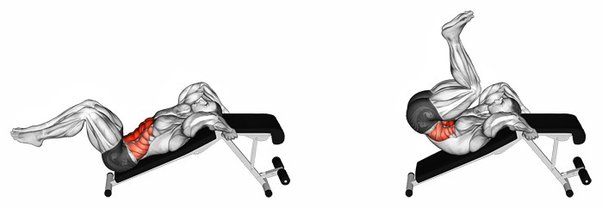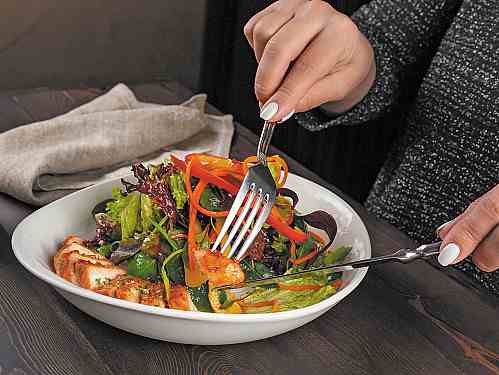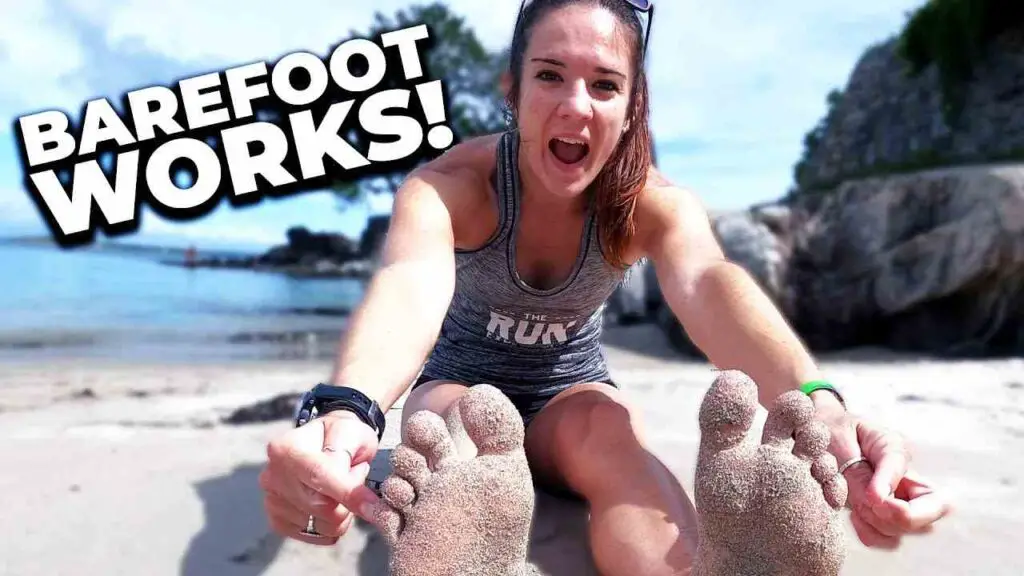Are you on a mission to shed that stubborn belly fat and carve out a toned midsection? You’ve probably heard of reverse crunches, a popular exercise touted for its ability to target the lower abs. But do reverse crunches really burn belly fat?
In this article, we’ll dive deep into the world of reverse crunches. We’ll explore what they are, the muscles they work, and how to perform them correctly. We’ll also discuss their role in fat loss and how they fit into a comprehensive fitness and diet plan.
Remember, there’s no magic bullet for burning belly fat. It requires a combination of regular exercise, a balanced diet, and a healthy lifestyle. So, let’s get started and see how reverse crunches can contribute to your fitness journey!
Understanding Belly Fat

Belly fat, often a source of frustration for many, is not just about fitting into your favorite pair of jeans. It’s a significant health concern that warrants a deeper understanding. There are two main types of belly fat: subcutaneous fat and visceral fat.
Subcutaneous Fat
This is the fat you can pinch, lying just beneath the skin. While subcutaneous fat can be aesthetically displeasing to some, it is generally less harmful compared to its counterpart, visceral fat. This type of fat is stored all over the body and serves as an energy reserve, protecting muscles and bones from impacts and providing insulation.
Visceral Fat
Visceral fat is the deeper, more dangerous type of fat that surrounds your internal organs, including your liver, pancreas, and intestines. It’s often referred to as “active fat” because it actively increases health risks. High levels of visceral fat are linked to various health problems, such as insulin resistance, type 2 diabetes, heart disease, and certain cancers.
Why Belly Fat is Stubborn
Losing belly fat can be particularly challenging due to a combination of genetics, hormones, and lifestyle factors. For many, the body tends to store fat in the abdominal area more easily and hold onto it more stubbornly. Hormones like cortisol, often increased by stress, can also contribute to the accumulation of belly fat.
The Role of Reverse Crunches
Reverse crunch is a core exercise focused on targeting the lower abdominal muscles. Unlike traditional crunches where you lift your upper body towards your knees, reverse crunches involve lifting your hips and legs towards your chest, providing an effective workout for your lower abs.
Here are the steps to perform a reverse crunch with proper form:

- Set Up: Lie down on a flat surface with your back on the ground and your eyes facing toward the ceiling. Position your arms straight by the sides of your body. Push your palms into the ground. Lift your lower body off the ground and bend your knees, so your legs form an upside-down “L.” Make sure that when you are in this position, your lower back is flat on the floor.
- Crunch Your Abs: Contract the muscles of your lower abdomen and bring your bent knees straight back until they’re just in front of your face. Make sure your hips and butt are firmly rooted to the floor. They’ll act as a hinge for your thighs to swivel over.
- Lift Your Knees Upward: As your knees come level with your gaze, push them up in the direction of the ceiling. This should cause your lower back and buttocks to come off the ground by an inch or two.
- Return Your Legs to the Start Position: Inhale as you slowly return your lower back to the floor in a controlled manner. Flatten your back gradually down to your tailbone. Stop when you reach your starting position.
Remember, the key to this exercise is to move slowly and accurately, use your core to curl your hips off the floor toward your chest instead of initiating the movement with your legs, and control the descent.
SHOP FOR THE BELLY FAT BURNER ON AMAZON
Reverse crunches primarily work your rectus abdominis (your “six-pack”). The primary function of this muscle is to flex your trunk and spine. Reverse crunches also activate your transverse abdominis, the deep muscle below your abdominals, and your external obliques. These muscles help stabilize your spine and core, and are the muscles on the side of your six-pack.
Do Reverse Crunches Burn Belly Fat?
Reverse crunch is a popular exercise often touted for their ability to strengthen the core and potentially target belly fat. However, it’s important to clarify that no single exercise, including reverse crunches, directly burns belly fat in isolation. Belly fat reduction primarily occurs through a combination of overall fat loss strategies, including a balanced diet, cardiovascular exercise, and strength training.
Reverse crunches can indeed strengthen the abdominal muscles, including the rectus abdominis and obliques, which may contribute to a more toned appearance as fat levels decrease overall. Their effectiveness in fat loss lies more in their role as part of a comprehensive workout routine that enhances metabolism and supports overall fitness. To maximize fat loss around the belly area, it’s crucial to adopt a holistic approach that includes a calorie-controlled diet and regular exercise regimen targeting both cardiovascular health and muscle development.
Benefits of Reverse Crunches
Reverse crunches offer numerous benefits, making them a valuable addition to any fitness routine. Here are some key benefits of reverse crunches:
- Strengthens Your Rectus Abdominis: The reverse crunch primarily works your rectus abdominis, the muscle in your abdomen that makes up your “six-pack.” The primary function of this muscle is to flex your trunk and spine.
- Takes Strain Off Your Neck: When doing sit-ups and crunches, people often pull their neck forward with their hands. The reverse crunch keeps your head flat on the ground and your neck out of a vulnerable position.
- Less Stressful on Your Back Than Crunches: Research has found that reducing how far your spine bends forward during crunches reduces the force on your spinal discs. Since reverse crunches flex your spine less than traditional crunches, they’re thought to be easier on your back.
- Targets Other Core Muscles: Reverse crunches also activate your transverse abdominis, the deep muscle below your abdominals, and your external obliques. These muscles help stabilize your spine and core, and are the muscles on the side of your six-pack.
- Easy to Set Up: All you need for reverse crunches is your own bodyweight. That means you can do them anywhere and anytime you want.
- Improves Core and Lower Back Stability: Adding reverse crunches to your workout routine helps to increase ab strength and definition, and improves core and lower back stability.
- Helps in Reducing Belly Fat: Reverse Crunches can be used to target the midsection and reduce belly fat, resulting in a firmer and flatter stomach.
Remember, while reverse crunches offer many benefits, they should be part of a balanced exercise routine that includes both strength training and cardio exercises.
Other Exercises to Burn Belly Fat
In addition to reverse crunches, several other exercises can help burn belly fat. Here are some of them:
Exercises for Long and Short Head Biceps
- Aerobic or Cardio Exercise: This includes activities like brisk walking, jogging, running, biking, rowing, swimming, and cycling. Regular cardio exercise is one of the most effective ways to burn calories and shed visceral fat.
- High-Intensity Interval Training (HIIT): HIIT involves short bursts of intense exercise alternated with low-intensity recovery periods. It is particularly effective at reducing belly fat and can be done in a variety of ways, including running, jumping jacks, burpees, pushups, jump squats, and high knees.
- Weight and Resistance Training: Building muscle mass through weight and resistance training can also help burn belly fat. Exercises like squats, lunges, deadlifts, dumbbell or barbell bench press, push-ups, chin-ups, and free-weight rows are particularly effective.
- Abdominal Exercises: In addition to reverse crunches, other abdominal exercises like crunches, lying leg raises, scissor kicks, knee tucks, and toe touches can also help tone your abs and reduce belly fat.
- Pelvic Tilt and Medicine Ball Stomach Lifts: These exercises target the lower abs and can help in reducing belly fat.
SHOP FOR THE RESISTANCE BAND ON AMAZON
Remember, the key to burning belly fat is not just about doing one type of exercise. It’s about incorporating a variety of exercises into your routine, along with a balanced diet and a healthy lifestyle.
Diet to Complement Reverse Crunches
A balanced diet is crucial in complementing your exercise routine for burning belly fat. Here are some dietary tips that can help:

- Lean Protein: Incorporate lean sources of protein like chicken, turkey, fish, beans, and lentils. Protein is essential for muscle recovery and growth, and it can also help keep you feeling full and satisfied.
- Whole Foods: Consuming a diet rich in whole foods, like fruits, vegetables, lean proteins, and whole grains, can help reduce overall body fat, including belly fat. These foods are low in fat and high in soluble fiber.
- Healthy Fats: Include healthy fats in your diet from sources like avocados, nuts, seeds, and olive oil. While you should keep your fat consumption below 30% of your daily calories, these healthy fats can help keep you satiated and support overall health.
- Hydration: Drinking plenty of water is crucial. It helps maintain your body’s fluid balance, aids in digestion, and can help control calories.
- Foods to Avoid: Reduce intake of processed foods, sugary snacks, and beverages. These foods are often high in calories and low in nutrients, and they can contribute to weight gain and belly fat.
- Fiber Intake: Aim for a diet high in fiber. Foods like whole grains, fruits, legumes, and vegetables are good sources of fiber. Fiber can help keep you feeling full, which can help control your calorie intake.
Remember, a balanced diet is just as important as regular exercise when it comes to burning belly fat. It’s all about creating a calorie deficit, where you’re burning more calories than you’re consuming.
Common Mistakes and How to Avoid Them
Here are some common mistakes people make while performing reverse crunches and tips on how to avoid them:
Goblet Squat and Hamstring Activation
- Using Momentum: It’s tempting to do the reverse crunch fast and use momentum to curl you up rather than the contraction of your abs. To avoid this, perform the exercise slowly and with control.
- Overextending the Spine: One common mistake is overextending the spine while lowering the legs, which causes the lower back to arch off the ground. To avoid this, ensure that only your tailbone and hips are raised from the mat in the upward phase.
- Flexing the Neck Forward: Another common mistake is flexing the neck forward as you curl up. Instead, keep your chin slightly tucked and maintain a neutral spine posture throughout the movement.
- Not Extending Legs Properly: Ensure that your abs are pulled in and your legs and feet are together. Raise your hips and pull your knees to your chest without moving your upper body at all.
- Lifting Hips Too High: Avoid lifting your hips too high off the mat. You should be utilizing your core to lift your hips.
SHOP FOR THE BELLY FAT BURNER ON AMAZON
Remember, the key to this exercise is to move slowly and accurately, use your core to curl your hips off the floor toward your chest instead of initiating the movement with your legs, and control the descent.
Progressions and Variations of Reverse Crunches
As you get stronger, there are several ways to make reverse crunches more challenging and continue to stimulate your muscles.
One way is to increase the speed of your reverse crunches while maintaining proper form. You can also add ankle weights or hold a weight with your arms vertically in the air while performing the movement.
Another option is to try straightening the legs during a reverse crunch. At the top of the crunch, try rotating to one side, twisting the legs, then alternate from side to side. You could also put a towel or Pilates ball between your legs and squeeze it while performing the movement. This ensures the abs are engaged the entire time.
Variations of Reverse Crunches:
- Weighted Reverse Crunch: Perform a traditional reverse crunch exactly as instructed above, but add ankle weights to further challenge your core.
- Straight-Leg Reverse Crunch: Perform the reverse crunch with your legs straight the entire time.
- Decline Reverse Crunch: Leverage the use of a decline weight bench or sit-up bench to increase how gravity acts upon your abdominals.
- Banded Reverse Crunch: Use a resistance band to add an extra challenge.
Muscle Growth with Functional Workouts
Remember, it’s always important to listen to your body and only increase the intensity of your workouts when you feel ready. Always maintain proper form to avoid injury.
FAQs
Q 1. What is the correct breathing technique while performing reverse crunches?
Ans. Exhale as you lift your hips off the ground and inhale as you return to the starting position.
Q 2. How many sets and repetitions of reverse crunches should I do in a workout?
Ans. Aim for three to four sets of eight to 20 repetitions for muscle mass, or six to 10 repetitions for strength, or 15 to 30 slow repetitions for endurance.
Q 3. Can I do reverse crunches every day?
Ans. Yes, but avoid overtraining and balance this exercise with a varied workout routine.
Q 4. What should I do if I feel pain in my lower back while doing reverse crunches?
Ans. Stop the exercise immediately, apply a cold compress, and consult a healthcare professional if the pain persists.
Q 5. Are reverse crunches safe for someone with a herniated disc or other back problems?
Ans. People with a herniated disc or other back problems should avoid exercises that put pressure on the spine, including reverse crunches.
Q 6. Can pregnant women do reverse crunches?
Ans. During early pregnancy, you can perform reverse crunches as you normally would. However, as your belly grows, you should avoid exercises that involve lying flat on your back. If you still want to engage your core, consider safer alternatives like standing core exercises or using a stability ball.
Q 7. Are reverse crunches effective for postpartum belly fat?
Ans. Yes, reverse crunches can be effective for postpartum belly fat as they target the lower abdominal muscles, which are often weakened during pregnancy.
Q 8. Can seniors perform reverse crunches?
Ans. Yes, seniors can perform reverse crunches, but they should do so under proper guidance and only if they are comfortable with the movement.
Conclusion
In conclusion, reverse crunch is a powerful exercise that can strengthen your core and contribute to your overall fitness journey. While they primarily target the rectus abdominis and other core muscles, they can also play a role in burning belly fat when combined with a balanced diet and a comprehensive exercise routine.
Remember, there’s no magic bullet for burning belly fat. It’s about creating a calorie deficit, where you’re burning more calories than you’re consuming. So, while reverse crunches can be a part of your workout routine, they should be complemented with other exercises, a balanced diet, and a healthy lifestyle.
It’s also important to perform reverse crunches with proper form to avoid injury and to get the most benefit from the exercise. As you get stronger, you can make reverse crunches more challenging and continue to stimulate your muscles.

Good day, and welcome to Fitthour. My name is Shubham Vijay, and I am a certified personal trainer and nutrition coach with 6 years of experience in the fitness industry. At Fitthour, we specialize in types of training, such as strength training, cardio, or HIIT, and our mission is to help clients achieve their fitness goals and improve their overall health.



